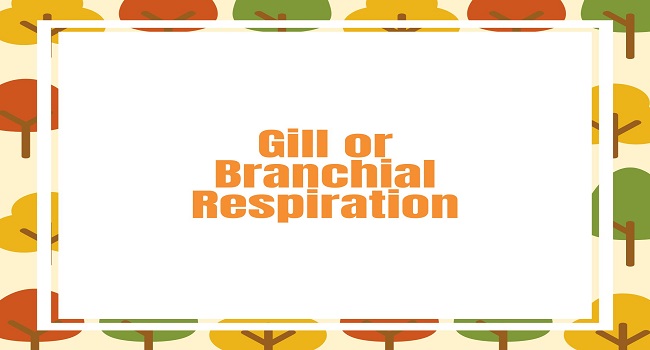Gill or Branchial Respiration:
Anybody appendage which serves for gaseous exchange through the aquatic medium is termed a gill. Typically gills are filamentous structures richly supplied with blood capillaries. The size of the gills depends upon the amount of oxygen in the water where such organisms are living. When they live in highly oxygenated water, their gills grow very slowly and when they live in water poor in oxygen the gills grow very large. The amount of gill surface is related to the habits of the organisms, sluggish bottom-dwelling organisms have less surface area than rapidly moving organisms. The gills are of various types which differ widely.
(1) External Gills- They can be defined as the specialized areas or the skin where the external surface is folded and covered by thin vascular and permeable skin. External gills are normally branched but may be filamentous.
Polychaetes represent the best example of animals possessing external gills. These animals secrete or consolidate around their bodies hard, protective tubes through which gaseous exchange cannot occur. Many of these worms have fine, thread-like gill filaments that project outside of the tube on and often to allow the gaseous exchange between the blood that flows through them and the respiratory medium. Others have shorter appendages that serve as gills. Filamentous gills are especially common among some of the marine worms that live in muddy layers at the bottom of the ocean where oxygen is often very less or totally absent due to bacterial activity. In this case, the gills extend above the mud into oxygenated water to enable efficient gaseous exchange. In echinoderms (asteroid) body is rather uniformly clothed with hollow, papillate, body wall extensions from the coelom (papulae), while in most echinoids five pairs of small branched structures (the gills) surround the peristomial region. In both cases, the exchange of gases through the stress is supplementary to the exchange which occurs through the tube feet or podia.
Among vertebrates, some salamanders, many frogs and toad tadpoles, and some fish also have external gills. In addition to this, these animals also respire with the help of moist skin, the mouth and throat lining, and even the cloaca.
(2) Internal Gills.









Comments (No)